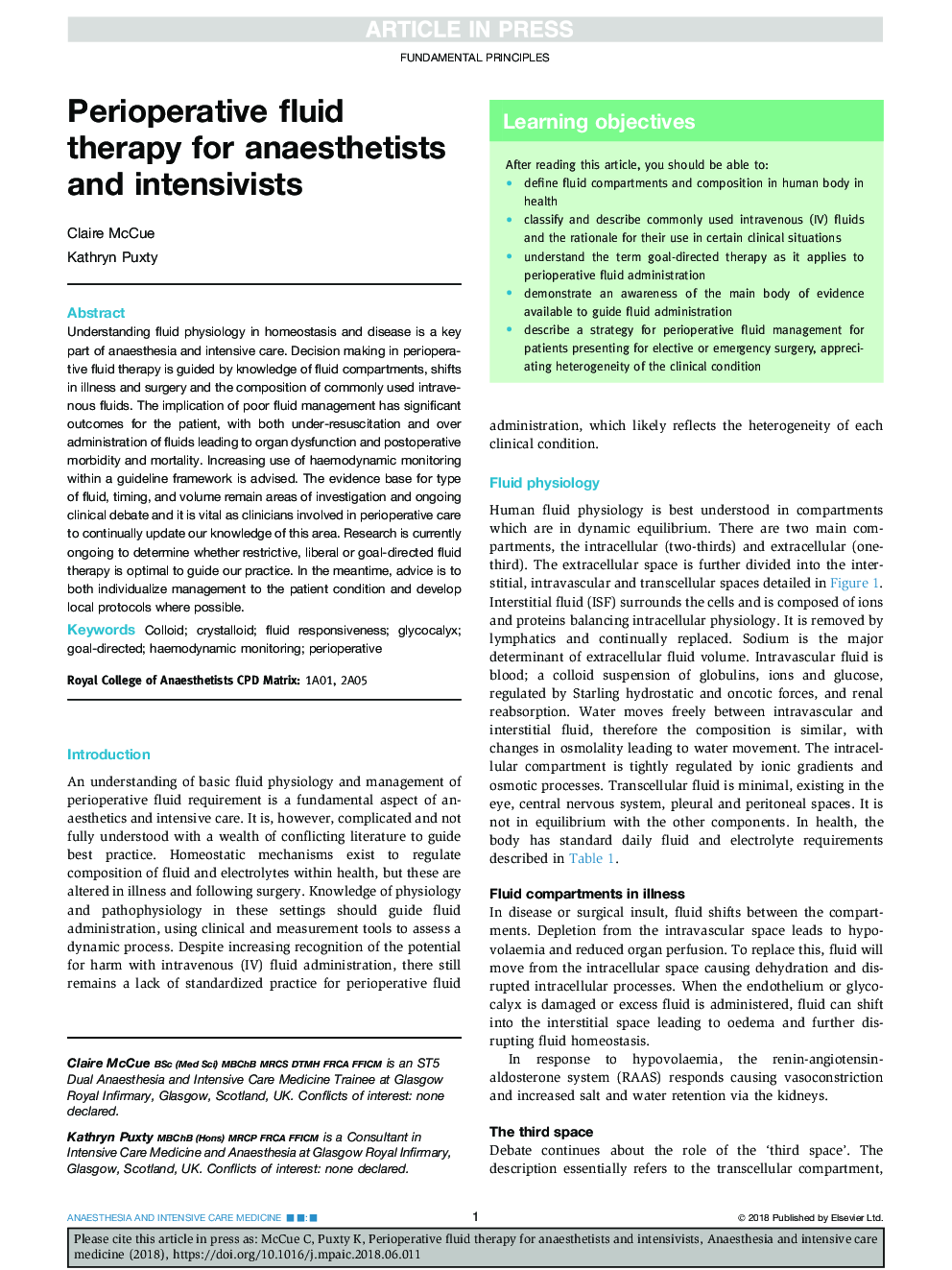| Article ID | Journal | Published Year | Pages | File Type |
|---|---|---|---|---|
| 8609808 | Anaesthesia & Intensive Care Medicine | 2018 | 4 Pages |
Abstract
Understanding fluid physiology in homeostasis and disease is a key part of anaesthesia and intensive care. Decision making in perioperative fluid therapy is guided by knowledge of fluid compartments, shifts in illness and surgery and the composition of commonly used intravenous fluids. The implication of poor fluid management has significant outcomes for the patient, with both under-resuscitation and over administration of fluids leading to organ dysfunction and postoperative morbidity and mortality. Increasing use of haemodynamic monitoring within a guideline framework is advised. The evidence base for type of fluid, timing, and volume remain areas of investigation and ongoing clinical debate and it is vital as clinicians involved in perioperative care to continually update our knowledge of this area. Research is currently ongoing to determine whether restrictive, liberal or goal-directed fluid therapy is optimal to guide our practice. In the meantime, advice is to both individualize management to the patient condition and develop local protocols where possible.
Keywords
Related Topics
Health Sciences
Medicine and Dentistry
Anesthesiology and Pain Medicine
Authors
Claire McCue, Kathryn Puxty,
